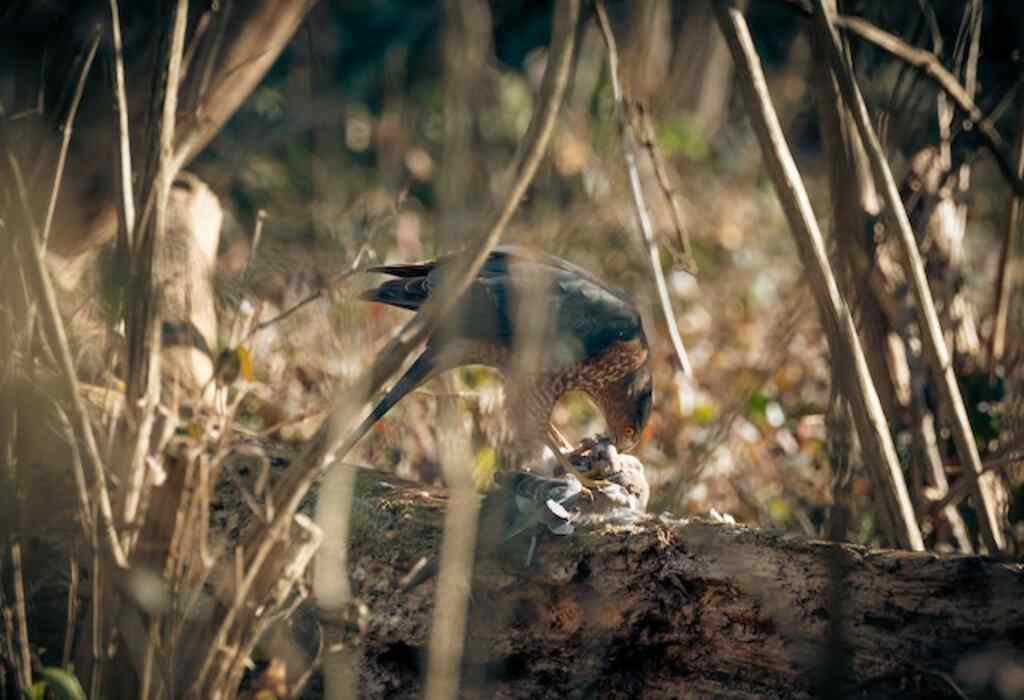Bird moms, brace yourselves! Hawks, those fascinating birds of prey with sharp talons, beak, and keen eyesight, have captured our awe worldwide.
But do hawks eat baby birds? Understanding their hunting habits unravels the secrets of their role in the ecosystem.
In this article, we delve into hawks’ carnivorous nature, their opportunistic hunting style, and unveil the truth about whether these majestic creatures indulge in tender feasts of baby birds.
Table of Contents [show]
Key Takeaways
- Hawks are opportunistic hunters that prey on anything they can catch, including baby birds.
- They use various tactics to catch prey and select it based on size, speed, vulnerability, and accessibility.
- Their prey selection is influenced by factors such as size, behavior, habitat, and environmental conditions.
- Methods of protecting baby birds from hawks include installing bird netting or creating natural barriers around nesting areas.
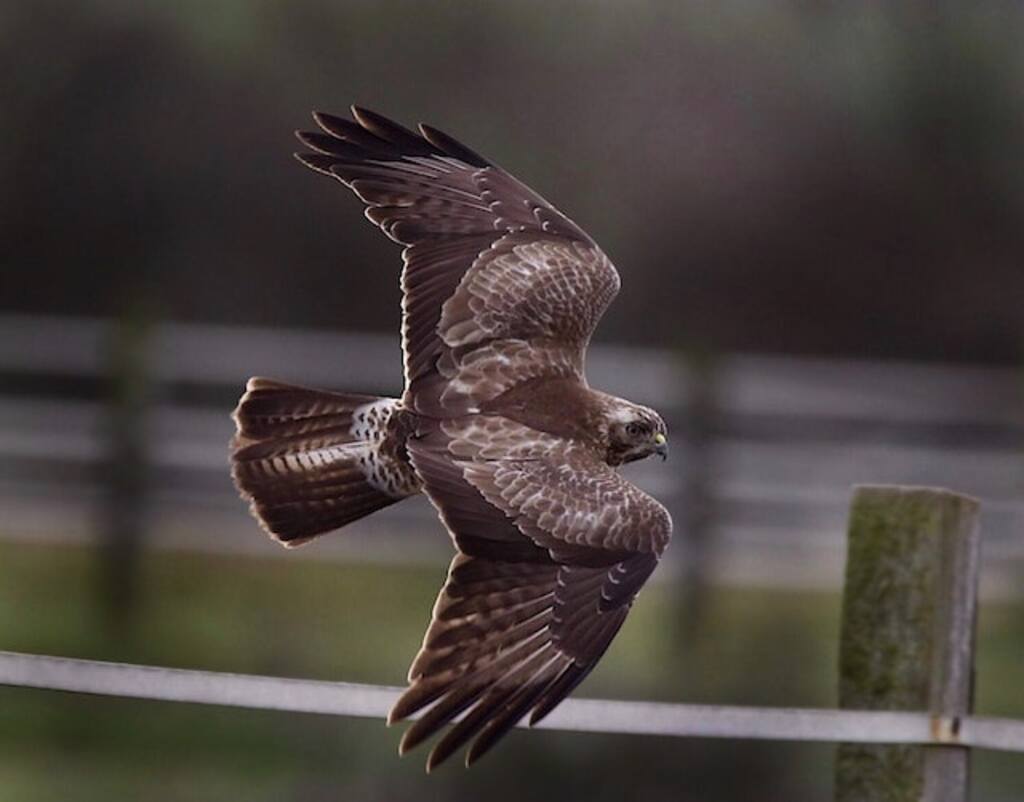
Understanding the Hunting Habits of Hawks
This discussion aims to explore the hunting habits of hawks, with a focus on their hunting techniques, prey selection, and hunting frequency.
Hawks are known for their prowess in hunting, using various tactics such as soaring, hovering, and dive-bombing to catch their prey.
Their selection of prey is based on factors such as size, speed, and vulnerability, and they can hunt frequently depending on their energy needs and availability of prey.
Hunting Techniques
Hawks use a variety of hunting techniques, including aerial attacks, surprise attacks, and waiting in ambush, to capture their prey, which may include baby birds.
Aerial attacks involve a hawk swooping down from above to catch its prey, while surprise attacks involve the hawk quickly flying towards its prey from a hidden location.
Waiting in ambush involves the hawk perching in a tree or other location, waiting for its prey to come within range.
These hunting strategies depend on the size of the prey, with larger prey often requiring aerial attacks and smaller prey being caught through surprise attacks or waiting in ambush.
While baby birds may be a potential target for hawks, they also hunt a variety of other prey, including small rodents and insects.
Understanding their hunting techniques and prey selection is crucial in understanding the role of hawks in the ecosystem.
Prey Selection
The prey selection of raptors can be compared to a finely tuned instrument, as they carefully choose their target based on various factors such as prey size, hunting range, and accessibility.
Raptors have been observed to select prey based on their size, as larger prey can provide more sustenance and may be easier to catch due to their slower speed.
However, they must also consider the accessibility of the prey, as larger prey may be more difficult to carry back to their nest.
In addition, raptors have been observed to select prey based on their hunting range, as some species may prefer to hunt in open areas while others prefer to hunt in wooded areas.
This careful selection of prey allows raptors to conserve energy and optimize their hunting success.
As we move into the subsequent section about hunting frequency, we will see how this prey selection influences the frequency at which raptors hunt.
Hunting Frequency
Optimizing hunting frequency is a crucial aspect of raptor survival, as it ensures that they are able to obtain enough food to sustain themselves and their offspring.
Hawks, like other raptors, exhibit a variety of hunting patterns depending on the prey they are targeting.
Some species, such as the Cooper’s hawk, specialize in hunting birds and will actively pursue them through dense vegetation or use surprise attacks to catch them off guard.
Other species, such as the red-tailed hawk, may hunt a wider range of prey including small mammals, reptiles, and insects.
Feeding behavior also varies among different species of hawks, as some may consume their prey on the spot while others will carry it back to a perch to consume later.
Understanding the hunting patterns and feeding behavior of hawks is important for conservation efforts and can also provide insight into the ecological roles that these birds play in their respective ecosystems.
Moving forward, it is important to explore the common prey of hawks in order to gain a deeper understanding of their impact on the environment.

Common Prey of Hawks
Various small mammals, reptiles, and birds such as rodents, snakes, and songbirds are common prey for hawks. Hawks are known to be opportunistic predators that will hunt whatever is available in their surroundings.
The type of prey that they target often depends on their size, habitat, and hunting technique.
For instance, larger hawks such as the red-tailed hawk and the Cooper’s hawk often hunt small mammals like rabbits, squirrels, and rodents.
Smaller hawks such as the sharp-shinned hawk and the kestrel, on the other hand, prefer smaller prey like songbirds and insects.
Hawks also have a preference for reptiles such as snakes and lizards, which they hunt by swooping down from a high perch or diving from the sky.
It is important to note that while hawks do have a varied diet, their preference for certain types of prey can vary depending on where they live and what is available in their environment.
This leads to the question, do hawks eat baby birds?
Do Hawks Eat Baby Birds?
As mentioned in the previous subtopic, hawks are known for preying on a variety of small animals, including rodents, reptiles, and birds. However, the question remains, do hawks eat baby birds?
The answer is yes, hawks do eat baby birds, as they are an easy and accessible source of protein.
This can have a significant impact on bird populations, as hawks are natural predators and play an important role in the ecosystem.
However, for bird enthusiasts, this can be concerning, particularly if they have birdhouses or nesting areas in their yard.
There are methods of protecting baby birds from hawks, such as installing bird netting or creating natural barriers around nesting areas.
By taking these precautions, bird enthusiasts can help ensure the safety of baby birds while still allowing hawks to play their natural role in the ecosystem.
Understanding the factors that influence prey selection is also important in understanding the behavior of hawks and their impact on bird populations.
Factors that Influence Prey Selection
The prey selection of hawks is influenced by a multitude of factors, including the size, behavior, and habitat of their potential prey.
Specifically, hawks are known to prefer prey that is smaller in size and more vulnerable, such as baby birds or rodents.
However, prey behavior also plays a significant role in their selection, as hawks tend to target prey that is active or moving, making it easier for them to pursue and catch.
Environmental conditions, such as the availability of prey and the location of their hunting grounds, also impact their selection.
For example, hawks may select prey that is more abundant in a given area, or they may target prey that is more accessible based on their surroundings.
Understanding these factors can help us better understand the hunting patterns of hawks and their impact on their prey populations.
Moving forward, it is important to explore how hawks feed on prey to gain a deeper insight into their hunting behaviors and strategies for survival.
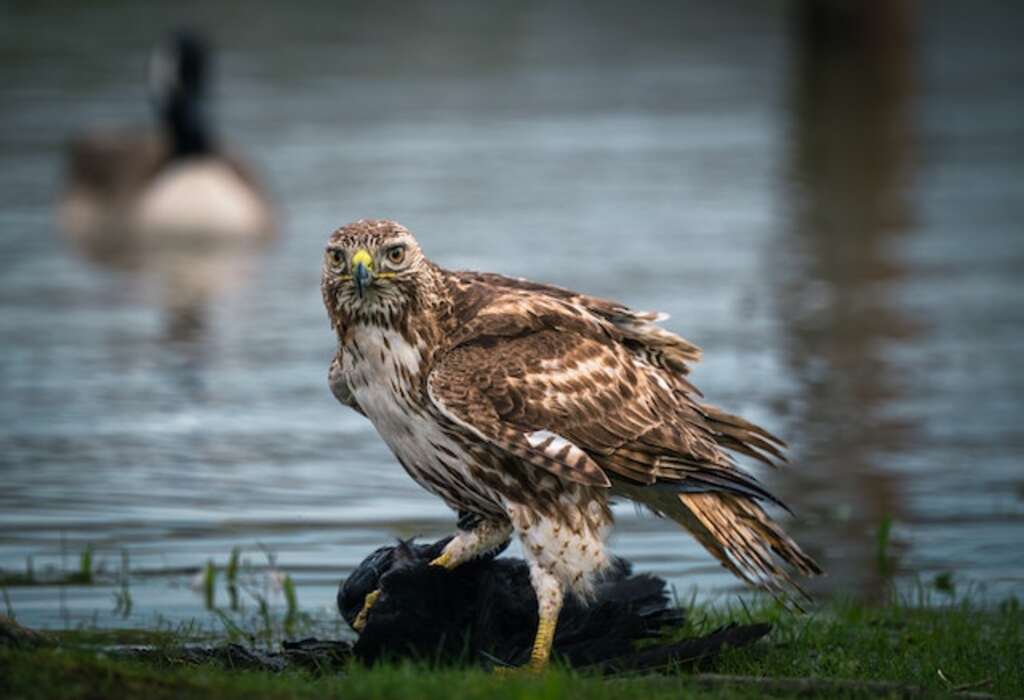
How Hawks Feed on Prey
Hawks have evolved various eating techniques that enable them to consume their prey efficiently. These techniques include tearing apart the prey’s flesh with their sharp talons, using their hooked beak to dismember the prey, and swallowing the prey whole.
Once the prey is consumed, the digestion process begins, where enzymes in the hawk’s digestive system break down the proteins, fats, and carbohydrates of the prey.
Eating Techniques
One common concern regarding the eating techniques of predatory birds is that they may consume baby birds, which can be seen as detrimental to local bird populations.
However, it is important to understand that hawks and other predatory birds have a sophisticated set of eating behaviors that allow them to consume prey in the most efficient and effective way possible.
For example, hawks have a sharp, hooked beak that is ideal for tearing flesh and a special digestive system that allows them to break down even the toughest prey.
Additionally, hawks are able to grip their prey with their talons, which are incredibly strong and can hold onto prey even when it is struggling.
To give a visual representation of their eating techniques, we can refer to the following table:
| Eating Techniques of Predatory Birds |
|:—:|:—:|:—:|
| Hooked Beak | Strong Talons | Special Digestive System |
| Ideal for Tearing Flesh | Can Hold Onto Prey | Breaks Down Even the Toughest Prey |
While it is possible that hawks may consume baby birds, it is important to note that they are an essential part of the ecosystem and play a crucial role in controlling populations of other animals.
Additionally, their sophisticated digestion process ensures that all parts of their prey are utilized and not wasted. Moving forward, we will explore the digestion process of hawks in more detail.
Digestion Process
Predatory birds, such as hawks, have a unique digestive system that allows them to efficiently break down their prey.
The digestive process begins as soon as the prey is caught, as hawks do not have teeth to mechanically break down their food.
Instead, the gastrointestinal tract function of hawks is designed to chemically break down the food with the help of enzymes produced by specialized glands in the digestive system.
These enzymes break down proteins, carbohydrates, and lipids into smaller molecules that can be absorbed by the body.
Nutrient absorption occurs in the small intestine where the nutrients are absorbed into the bloodstream and transported throughout the body.
The remaining indigestible material is passed through the large intestine and excreted as feces.
The efficient digestive process of hawks is essential for their survival and enables them to extract the maximum amount of nutrients from their prey.
Understanding the nutrient absorption and gastrointestinal tract function of hawks is crucial for comprehending their role in the ecosystem and the impact they have on other species.
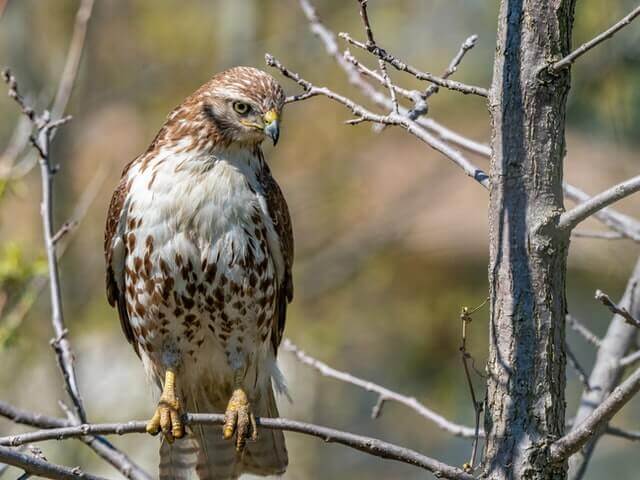
Role of Hawks in the Ecosystem
The presence of hawks in an ecosystem plays a crucial role in maintaining a balance between prey and predator populations, with studies showing that a decline in hawk populations can lead to a surge in prey species such as rodents.
Hawks serve as top predators that help to control the populations of smaller animals, thereby preventing them from overgrazing and damaging the ecosystem.
In addition, hawks have a cascading effect on other species in the food chain, since their presence affects the behavior and distribution of prey animals.
For example, the presence of hawks can cause prey animals to change their foraging patterns or avoid certain areas, which can have a ripple effect on the surrounding plant and animal communities.
Furthermore, hawks have cultural and aesthetic value, as they are often viewed as symbols of power, freedom, and natural beauty.
To preserve the important role that hawks play in predator-prey dynamics and the ecological impact they have, it is imperative to establish conservation efforts that protect their habitats, reduce human-caused mortality, and promote education and awareness about the importance of hawks in our ecosystems.
Conservation Efforts for Hawks
Conservation efforts for hawks involve protecting their habitats, reducing human-caused mortality, and promoting education and awareness about their crucial role in maintaining the balance of predator-prey dynamics in ecosystems.
Hawks and human interaction can often lead to negative consequences for both parties.
For instance, urbanization and deforestation have led to the destruction of hawk habitats, which has forced these birds to adapt to living in urban areas, where they often face dangers such as electrocution or collisions with buildings.
To mitigate these risks, conservationists have implemented measures to protect hawk habitats, such as planting trees and creating wildlife corridors.
Additionally, reducing human-caused mortality through measures such as enforcing laws against hunting or trapping hawks has also been a focus of conservation efforts.
Promoting education and awareness about the importance of hawks in maintaining the balance of predator-prey dynamics in ecosystems is also essential to their conservation.
| Hawk Species | Preferred Habitat |
|---|---|
| Red-tailed Hawk | Forests, grasslands, deserts, urban areas |
| Cooper’s Hawk | Dense forests |
| Sharp-shinned Hawk | Breeding in North America, migrates southward |
| Northern Harrier | Across many regions, flying low to the ground |
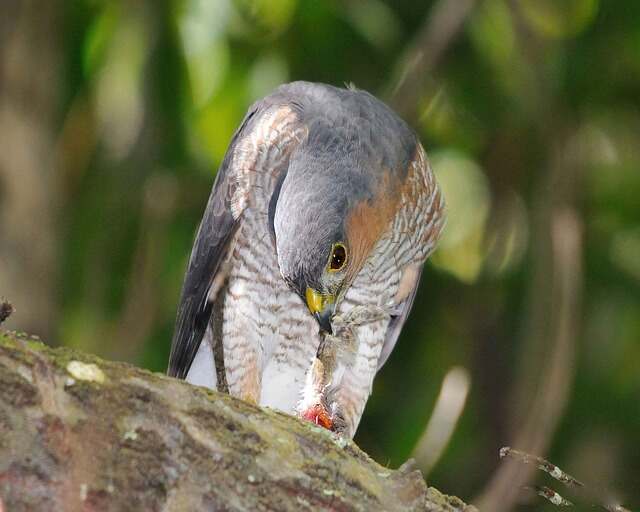
Coexisting with Hawks
Understanding the ecological role of hawks in their habitats is crucial for developing effective strategies to coexist with these birds.
Hawks play an important role in controlling populations of rodents and small mammals, which can cause damage to crops and other vegetation.
To live peacefully with hawks, it is important to implement protection methods that work for both humans and the birds.
These include: providing nesting boxes for hawks to encourage them to nest in safe areas, placing netting over gardens to prevent hawks from preying on small birds, and using scare tactics such as reflective tape or loud noises to deter hawks from entering areas where they are not wanted.
It is important to remember that hawks are protected by federal and state laws, so it is illegal to harm or kill them.
By understanding the importance of hawks in their ecosystems and implementing effective protection methods, we can coexist with these beautiful birds while still protecting our own interests.
Frequently Asked Questions
How do hawks differ from other birds of prey in their hunting habits?
Compared to other birds of prey, hawks demonstrate unique adaptations in their hunting techniques. They use their keen eyesight and agility to swiftly capture prey. Their hunting style is precise and calculated, showing little room for error.
What are some unusual prey items that hawks have been known to target?
Insectivorous hawks have been known to exhibit unique hunting techniques and target unusual prey items such as snakes, lizards, and even bats. These behaviors demonstrate the adaptability and resourcefulness of these birds of prey in their pursuit of food.
Do different species of hawks have different prey preferences?
Hawk diet variations exist among different species due to variations in hunting techniques. Hawks hunt a wide range of prey, including small mammals, reptiles, insects, and birds. Understanding these variations can provide crucial insights into the ecology of these birds of prey.
How do hawks hunt in urban environments where there may be fewer natural prey options?
Hawks in urban environments have adapted their hunting strategies to include alternative food sources such as rodents, insects, and small mammals. They may also scavenge for food in human habitats. This enables them to survive despite the limited natural prey options.
What is the impact of climate change on hawk populations and their prey availability?
Climate change impact on hawk populations and prey availability fluctuations has been devastating. Extreme weather events have disrupted prey populations, leading to food shortages for hawks. This threatens their survival and highlights the need for conservation efforts.
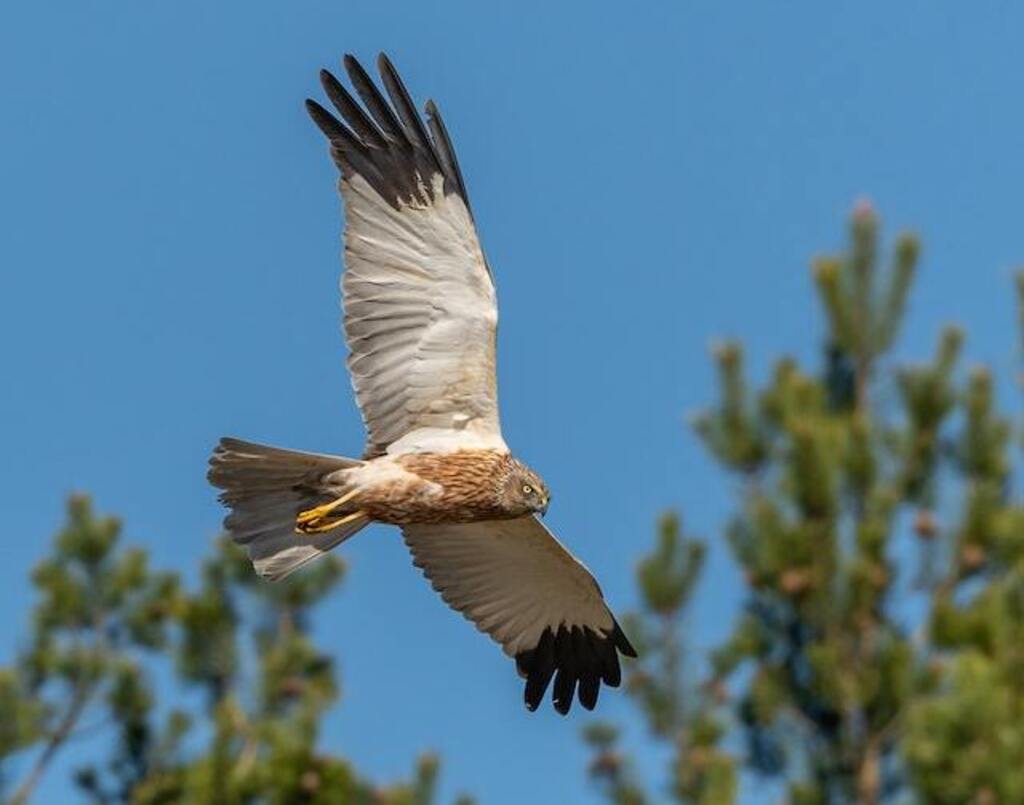
Conclusion
In conclusion, hawks are fascinating birds of prey with unique hunting habits that play a crucial role in regulating their ecosystem.
Despite their reputation as fearsome predators, they have a diverse diet that includes a range of prey such as rodents, reptiles, and yes, even baby birds.
However, prey selection is influenced by various factors such as habitat, seasonal availability, and reproductive cycle.
Understanding the hunting habits of hawks can help us coexist with them while preserving their natural habitats.
Conservation efforts such as protecting nesting sites and reducing pesticide use can help sustain hawk populations.
By appreciating the role of hawks in the ecosystem, we can appreciate the delicate balance of nature and work towards a more sustainable future.

